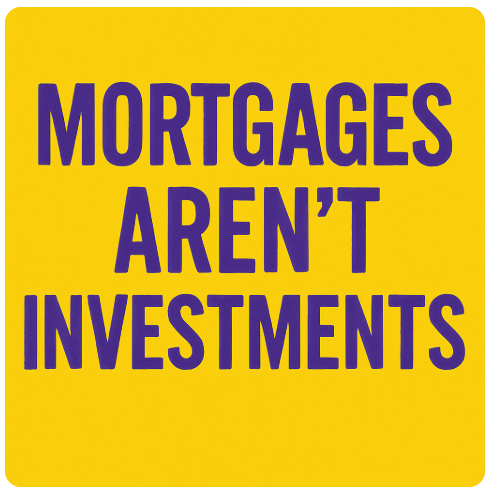Mortgages Aren’t Investments—They’re Life Strategies

For decades, the concept of a mortgage has been simple: borrow money to buy a home. But in recent years, the purpose and perception of mortgages have drifted far from this foundational idea. Somewhere along the line, the mortgage morphed from a practical financing tool into a platform for speculative wealth-building—and it’s time we realign expectations with reality.
A Home Is Not an Investment
Let’s be clear: a house is not an investment. It’s a place to live. At best, it’s a hedge against rising housing costs and inflation. You pay your mortgage instead of paying rent. But unlike investments, homes require ongoing costs that rarely appreciate in value—property taxes, insurance, upkeep, and repairs. These aren’t optional, and they don’t stop once your mortgage does.
Too often, people compare mortgage payments to rent and conclude that owning is cheaper. That comparison is incomplete. Ownership costs go well beyond the principal and interest on a mortgage. A financially responsible homeowner considers the total cost of ownership, not just the monthly payment.
One Mortgage, One Goal
A sensible mortgage strategy involves one, maybe two mortgages over a lifetime—ideally, a single loan to purchase a home that suits your long-term needs. If your family grows or your life circumstances change significantly, upgrading may require a second mortgage. That’s acceptable. But the goal should always be eventual freedom from mortgage debt.
Unfortunately, this principle is now frequently ignored. Refinancing, home equity lines of credit, and “cash-out” strategies have become routine. The idea of re-borrowing against a partially paid-off home is often sold as “financial optimization.” In reality, it’s a setback disguised as a strategy.
The Mirage of Refinancing and Leveraging
Refinancing to add new money to your debt load is a fool’s game. It’s often marketed as a way to reduce payments or “free up capital,” but the long-term result is a delayed payoff and a deeper financial hole. Every time you re-borrow, you reset the clock and extend your financial obligations.
Then there’s leveraging—using one property to finance another. Banks may call it “equity optimization,” but it’s more accurately a self-liquidating risk. Every dollar borrowed against your home is a bet that property values and rental income will outpace interest rates and upkeep costs. When markets shift, it’s the homeowner who’s left holding the bag.
The Truth About “Real Estate Investors”
Real estate investors aren’t actually investing in property—they’re investing in you, the buyer, who makes regular payments so they can earn passive income. When you buy an overvalued property or stretch to meet loan terms, someone else is collecting the dividends.
The rise of multi-layered mortgaging—where homeowners juggle first mortgages, second mortgages, and home equity lines—is a dangerous trend. It’s a strategy of short-term gain and long-term pain. It’s two steps forward and three steps back.
The Purpose of Mortgage Freedom
A home should be a permanent, debt-free asset by the time you retire. This isn’t just an ideal—it’s a necessity. In your working years, the mortgage serves a purpose: securing shelter while building ownership. But the goal is to “clear the decks” before retirement, so you’re not making monthly payments when your income is limited.
A debt-free home provides security, affordability, and independence. And when the time comes when you can no longer care for yourself, that home can be sold to fund long-term care.
The Growing Crisis Among Retirees
Sadly, more retirees today are still paying mortgages into their seventies—and working longer to do it. This is not financial freedom. It’s a symptom of a system that encourages perpetual borrowing and treats homes as piggy banks.
The original wisdom still holds true: buy a home you can afford, pay it off steadily, and live in it debt-free. That is the true value of a mortgage—not to build wealth for others, but to build stability for yourself.
